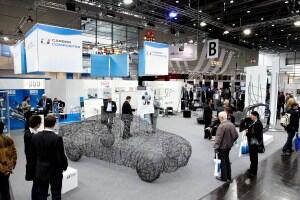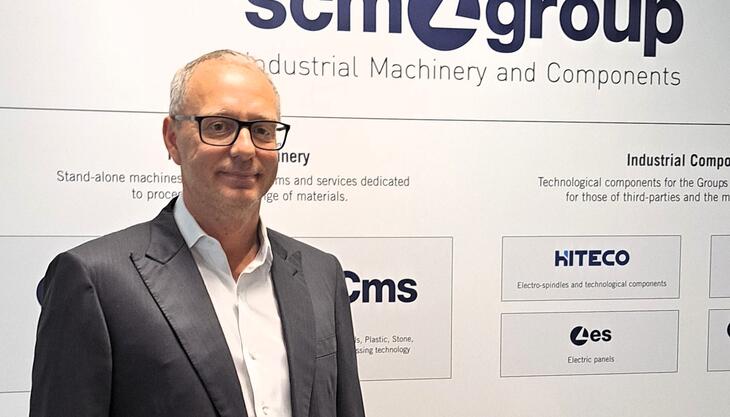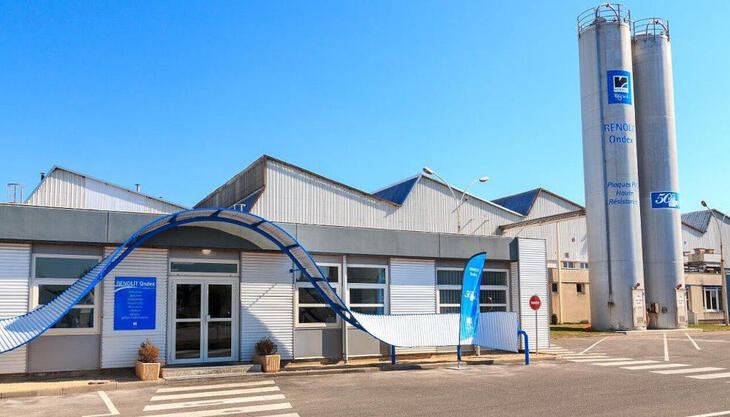A slightly positive trend for GRP

After a slight year-on-year decline in the volume of glass fibre reinforced plastics (GRP) produced in 2012, the sector returned to growth, albeit weak, in 2013. The overall market in Europe is expected to grow by 1% to an estimated 1.02 million tons. The GRP industry is dominated by small and medium-sized companies and is therefore extremely diverse not only in terms of the spectrum of manufacturing processes and level of automation but also in regional differences, country-specific conditions and the raw materials used. Let's have a look at the trends in the development of procedures/components, according to a recent study by AVK (the German federation of reinforced plastics).
SMC (sheet moulding compound) and BMC (bulk moulding compound) components, mostly series manufactured, still account for one quarter of the total quantity of GRP produced. The largest market here is vehicle production, which is experiencing its most difficult year for some time in 2013. Consequently, SMC production has contracted by over 2%. As was the case last year, production of BMC components grew slightly by 1.4%, which can be attributed primarily to applications in the electro/electronics industry.
The least automated "open processes" (hand layup, spray-up) continue to be in decline. While the volume of components manufactured using the spray-up process is stagnating, the market for hand lay-up parts is shrinking by over 2%.
Growth in the production of RTM (resin transfer moulding) components, at around 5%, has been stronger than average in 2013. Due to the wide range of production possibilities and the broad scope for changing its process parameters, RTM processes are currently among those receiving the greatest attention with regard to the development of large series production processes in the composites Sector.
With annualised growth of nearly 8%, continuous processes for manufacturing GRP panels and webs have been among the fastest-growing in the sector. As well as applications in the transport sector, suppliers are also opening up an ever-growing number of new uses in the sport/leisure and construction sectors (e.g. for facades). After its contraction last year, the market for GRP pultrusion profiles has stabilised in 2013 and is no longer in decline in Europe.
Western European countries again recorded a slight fall of 2% in the production of pipes and tanks, which are manufactured using the centrifugal casting and filament winding processes. However, the production figures for Europe do not reflect country-specific differences or major drinking water projects in the countries of Central and South-Eastern Europe as well as North Africa.
As was the case last year, the market trend for glass mat reinforced thermoplastics (GMT) and long fibre reinforced thermoplastics (LFT) was significantly more positive than the average. The main area of application for these products is the automobile industry. Here, manufacturers of thermoplastics have, above all, repeatedly found success in replacing other materials and opening up new areas outside this industry.
The quantities of short fibre reinforced thermoplastics produced are difficult to assess and record and as a result they are not included in the GRP study presented by AVK on September 17, 2013, in the occasion of the exhibition Composites Europe.
However, this area is growing fast compared to the GRP market as a whole. It is estimated that the total quantity manufactured in Europe is more than 20% greater than the production figure for GRP stated here. Approximately half the volume produced is used in applications in the transport sector, one quarter in the electro/electronics sector and somewhat more than 15% in the area of sport & leisure.
Once again, this survey has detected virtually no shift in the proportions of GRP components used in the individual application industries in 2013. The transport and construction sectors each consume one third of total production volume. Other sales markets include the electro/electronics sector (E&E) and the sport & leisure segment.
Clear differences are surveyed in the development of the market in the various European nations. These correspond very closely to the growth or contraction in the respective economies and the major applications for GRP components in these countries. Only a few countries are experiencing any growth at all. As was the case last year, these include Germany, the UK/Ireland and Eastern European countries. In the case of Germany, this is due to the generally good growth in its economy.
In Eastern Europe, growth is primarily being driven by major infrastructure projects. GRP production is still declining most significantly in the countries of Southern Europe, whose economies continue to be in recession - although this negative trend is less pronounced than in 2012. Volumes in the Benelux countries are also shrinking while the markets in Austria and Switzerland are stagnating. According to figures provided by the Turkish Composites Association (TCMA), the country is again expecting above average growth - compared to the rest of Europe - of nearly 10% in 2013. The slow growth of the European GRP market in 2013 closely mirrors the general development of the European economy. Nor is any other region of the global economy growing as strongly as last year. Although continued growth is expected in the BRIC countries (Brazil, Russia, India, China) in 2013, this is significantly weaker than in recent years.



















